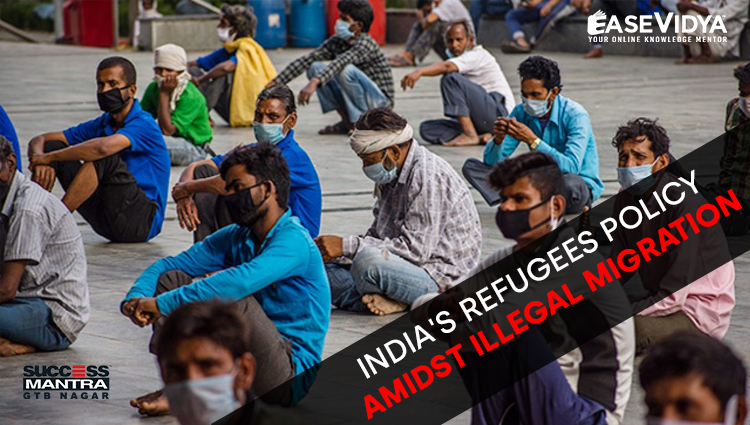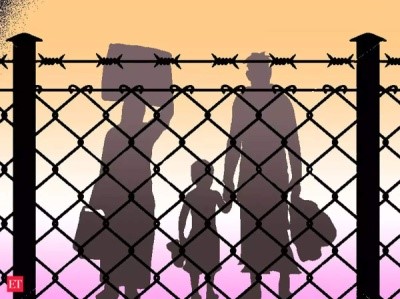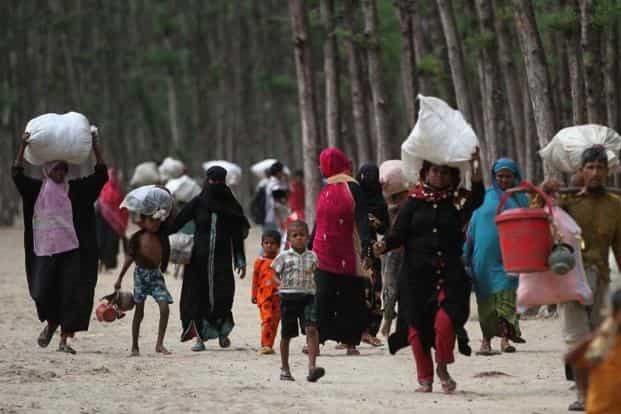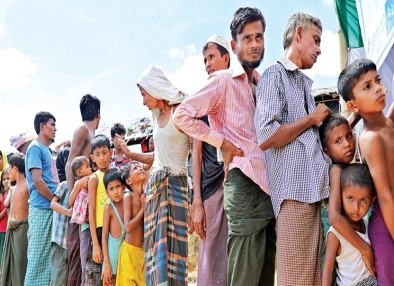
INDIA'S REFUGEES POLICY AMIDST ILLEGAL MIGRATION
INDIA'S REFUGEES POLICY AMIDST ILLEGAL MIGRATION

Recently, there has been an influx of illegal migrants into India after the military coup and subsequent crackdown in Myanmar. The current plight of the Myanmarese has been preceded by that of another group of Myanmarese, the Rohingya. Historically, India has witnessed an inflow of refugees from many neighboring countries. The refugee issue poses a problem for the state as it puts an economic burden, may trigger demographic changes in the long term, and poses security risks as well. However, taking care of refugees is the core component of the human rights paradigm. Further, in any case, refugee flows to India are unlikely to end any time soon given the geopolitical, economic, ethnic, and religious contexts of the region. Hence, there is an urgent need today to clinically address the issue of refugee protection in India and put in place appropriate legal and institutional measures.
REFUGEE'S POLICY OF INDIA

India lacks specific legislation to address the problem of refugees, in spite of their increasing inflow. The Foreigners Act, 1946, fails to address the peculiar problems faced by refugees as a class. It also gives unbridled power to the Central government to deport any foreign citizen. Further, the Citizenship Amendment Act, 2019 (CAA) strikingly excludes Muslims from its purview and seeks to provide citizenship only to Hindu, Christian, Jain, Parsi, Sikh, and Buddhist immigrants persecuted in Bangladesh, Pakistan, and Afghanistan. Moreover, India is not a party to the 1951 Refugee Convention and its 1967 Protocol, the key legal documents pertaining to refugee protection. In spite of not being a party to the 1951 Refugee Convention and its 1967 Protocol, India has had a stellar record on the issue of refugee protection. India has a moral tradition for assimilating foreign people and culture. Further, the constitution of India also respects the life, liberty, and dignity of human beings.
The Supreme Court in the National Human Rights Commission vs. State of Arunachal Pradesh (1996) held that “while all rights are available to citizens, persons including foreign citizens are entitled to the right to equality and the right to life, among others.”
INDIA'S REASON FOR NOT SIGNING 1951 CONVENTION
The definition of refugees in the 1951 convention only pertains to the violation of civil and political rights, but not economic rights, of individuals. For instance, a person, under the definition of the convention, could be considered if he/she is deprived of political rights, but not if he/she is deprived of economic rights. If the violation of economic rights were to be included in the definition of a refugee, it would clearly pose a major burden on the developed world. On the other hand, this argument, if used in the South Asian context, could be a problematic proposition for India too.
CHALLENGES RELATED WITH INDIA'S REFUGEES POLICY

Refugees vs. Immigrants: In the recent past, many people from neighboring countries tend to illegally immigrate to India, not because of state persecution but in search of better economic opportunities in India. While the reality is that much of the debate in the country is about illegal immigrants, not refugees, the two categories tend to get bunched together. Due to this, policies and remedies to deal with these issues suffer from a lack of clarity as well as policy utility.
Ambiguity in the Framework: The main reason why our policies towards illegal immigrants and refugees are confused is that as per Indian law, both categories of people are viewed as one and the same and are covered under the Foreigners Act, 1946.
Ad-hocism: The absence of such a legal framework also leads to policy ambiguity whereby India’s refugee policy is guided primarily by ad hocism. Ad hoc measures enable the government in office to pick and choose ‘what kind’ of refugees it wants to admit for whatever political or geopolitical reasons. This results in a discriminatory action, which tends to be a violation of human rights.
Discriminatory CAA: The Government of India has passed the Citizenship Amendment Act (CAA). CAA envisages providing citizenship to people who are religious minorities in India’s neighborhood and persecuted by the state. However, CAA is not the answer to the refugee problem primarily because of its deeply discriminatory nature, as it doesn’t include a particular religion under its ambit. Further, many political analysts have dubbed the CAA as an act of refugee avoidance, not refugee protection.
CONCLUSION
In spite of not being a party to the 1951 Refugee Convention and its 1967 Protocol, India has been one of the largest recipients of refugees in the world. However, if India had domestic legislation regarding refugees, it could have deterred any oppressive government in the neighborhood to persecute their population and make them flee to India.
TEST YOURSELF
Q.1 Recently, there has been an influx of illegal migrants into India from which of the following countries following the military coup in that nation?
- Myanmar: ANSWER
- Bangladesh
- Sri Lanka
- None of the following
Q.2 Consider the following statements and state which of the following is incorrect in the context of the above mentioned passage?
- Citizenship Amendment Act, 2019 (CAA) strikingly excludes Muslims from its purview and seeks to provide citizenship only to Hindu, Christian, Jain, Parsi, Sikh, and Buddhist immigrants persecuted in Bangladesh, Pakistan, and Afghanistan.
- India is not a party to the 1951 Refugee Convention and its 1967 Protocol, the key legal documents pertaining to refugee protection
- Only I follows
- Only II follows
- Both I & II are correct: ANSWER
- None is correct
Q.3 Under which of the following articles of the Indian Constitution refugees are not deprived of their rights and personal liberties?
- Article 32
- Article 12
- Article 14
- Article 21: ANSWER
Q.4 As per the Convention Relating to the Status of Refugees, 1951, the definition of refugees in the 1951 convention only pertains to the violation of __________?
- Civil and political rights: ANSWER
- Economic rights of individuals
- Social & cultural Rights
- None of the above
Q.5 Consider the following statements & state which of the following is/are correct in the reference to the UN Human Rights Council?
- The Council was created by the United Nations Security Council in 2006 & replaced the former United Nations Commission on Human Rights.
- The Human Rights Council is an inter-governmental body responsible for strengthening the promotion and protection of human rights around the world: ANSWER
- It is made up of 77 United Nations Member States which are elected by the UN General Assembly (UNGA).
- None of the above












0 Comment